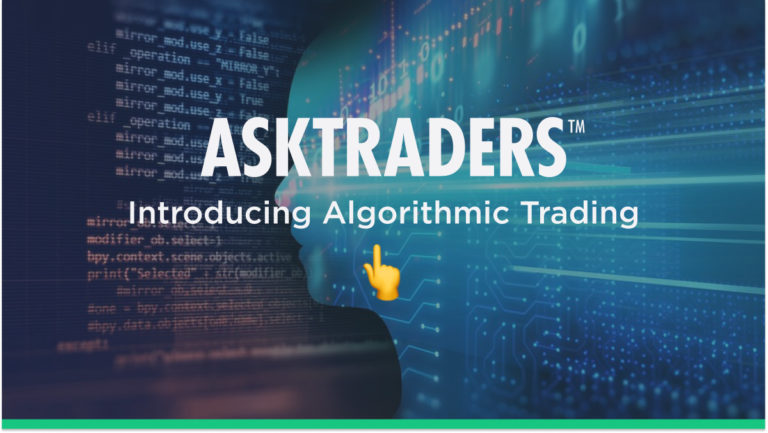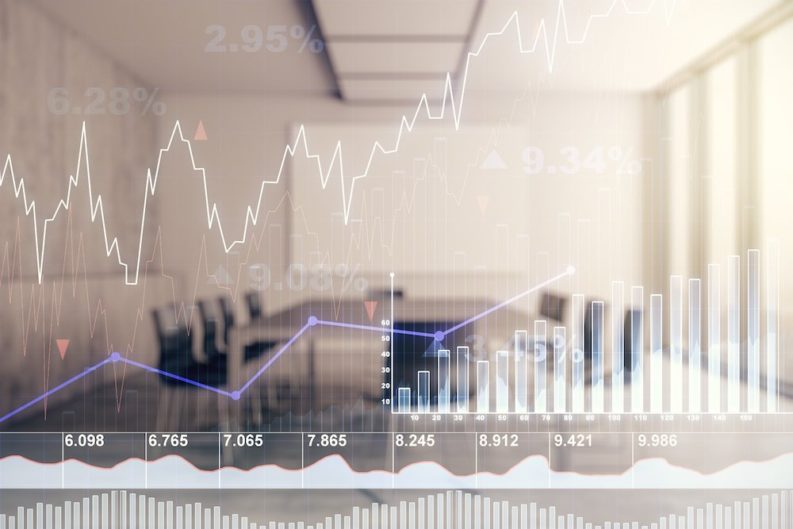
Algorithmic trading usually accounts for price, time and volume, using complicated mathematical models and formulas, even sometimes incorporating human interaction. This is a rules-based strategy with the goal of deciding when best to enter the trade, when to buy and sell and when to cut losses or take profits. The key input in these algorithms is the definition of the rules – this determines the profitability of the approach.
In this article, we will look at:
- How algorithmic trading works
- What is an algorithmic trader?
- What is the best algorithmic trading software?
- What are the best algorithmic trading strategies?
- Trend-following strategy
- Mean reversion strategy
- Volume Weighted Average Price (VWAP) and Time Weighted Average Price (TWAP) strategies
- What To Read Next
How algorithmic trading works
The first step of trading using algorithms is to set the goal of the programme, but unlike most trading approaches, this is not always to maximize profits. Other uses of algorithmic trading can be to perform sizeable orders for institutional investors, whose aim may be to attain the best possible price to enter or exit a market. Despite this being a similar goal to achieving profit, the rules defined in the algorithm will differ to those of someone looking to maximise profit in the long run.
Our goal as traders is, in fact, to make profit, meaning the next step in our process is to determine a time period in which we want to achieve the profit. For the most part, trades using algorithms are performed in the short term, with positions often being held for merely seconds or minutes. This can be stretched to an hour or in rare cases, a few days.
After a timeframe has been established, the next step is to determine the set of rules the trader wants to apply and test from a strategy. These rules and the strategy, in general, must be tested thoroughly to make sure the approach is profitable, at least looking back at previous events. This process will be explored deeper later in the article.

What is an algorithmic trader?
An algorithmic trader is, unsurprisingly, someone who uses an algorithmic approach when trading. As we have said previously, the trader determines the rules and practices that outline the algorithmic trading strategy.
Traders who use algorithms also tend to have certain characteristics or a certain background, often leaning towards a technical analysis approach to trading. They can combine their strong market knowledge with an insight into markets from a mathematical standpoint while also regularly having an understanding of programming.
Over the last 20 years, there has been a continual expansion in algorithmic trading along with automated algorithmic trading strategies since the boom at the start of this period. Naturally, this has seen an expansion in algorithmic traders alongside this.
What is the best algorithmic trading software?
It is hard to determine the best algorithmic trading software, with there being multiple programming languages that are frequently used when writing these, including Python, JAVA, Matlab, Perl and C++. As traders, we are unlikely to use these languages to actually programme the software directly, instead, we will use one of the multiple software interfaces out there.
The Meta Trader suite offers the most popular and debatably the best of these interfaces from the perspective of the individual trader. This suite contains the programming languages MT4 and MT5 and MQL5 and MQL4. From a beginner’s standpoint in algorithmic trading, we would advise trying these out first.
What are the best algorithmic trading strategies?
Algorithmic strategies for traders are best when they are numerous, and any strategy can only be judged by the success of its outcomes. Algorithmic trading strategies have a tendency to come and go, but there are a few frequent starting points used by algorithmic traders when producing their strategy.
These strategies include:
- Trend-following strategy
- Mean reversion strategy
- Volume Weighted Average Price (VWAP) and Time Weighted Average Price (TWAP) strategies

Trend-following strategy
Amongst the most common algorithmic strategies in trading, trend-following strategies use moving averages to determine trend lines. They do this while using multiple other technical analysis tools that indicate a trend, an example being trend momentum indicators, like an RSI.
While using a trend following strategy, you only need to determine any particular timeframe and enter trades in the direction of trends. Therefore, there is no requirement to make any future price calculations. The position is exited, potentially even reversed, when the strategy determines these trends have come to an end. This definition means we can also view a trend-following algorithmic trading strategy as a momentum-following one.
Mean reversion strategy
Mean reversion strategies are based around the idea that market prices will revert to an average or mean price level over any time period. This is based on the mathematical concept of regression to the mean.
Mean reversion strategies attempt to exploit situations when a particular market experiences significant price changes away from an average level, with the assumption that it will revert to its previous state. An algorithmic mean reversion trading strategy is simply one that uses this concept but formalises it using defined rules and then packages it with an automated program.
As with the trend-following strategies above, technical indicators such as Bollinger Bands or momentum indicators like Stochastics could be used in a mean reversion algorithmic trading strategy.
Volume Weighted Average Price (VWAP) and Time Weighted Average Price (TWAP) strategies
Volume Weighted Average Price (VWAP) and Time Weighted Average Price (TWAP) strategies come under the same area of algorithmic trading strategies. These trading strategies are generally used by institutional brokers when executing orders for their large institutional clients, such as hedge funds or pension funds.
Volume weighted average price strategies look to execute large market orders to be close to the VWAP. The VWAP is the average price and market is traded over a certain time period weighted by the volume of trades, often over a trading day. The algorithmic strategy aims to achieve an average price close to the VWAP over the same period of time. Learn more here.
What To Read Next
We trust you have learnt some new aspects of algorithmic trading and why it is important, plus a look at the software you can use and some of the best algorithmic trading strategies. You may also want to check out some of the following posts to move forward with your algorithmic trading.
